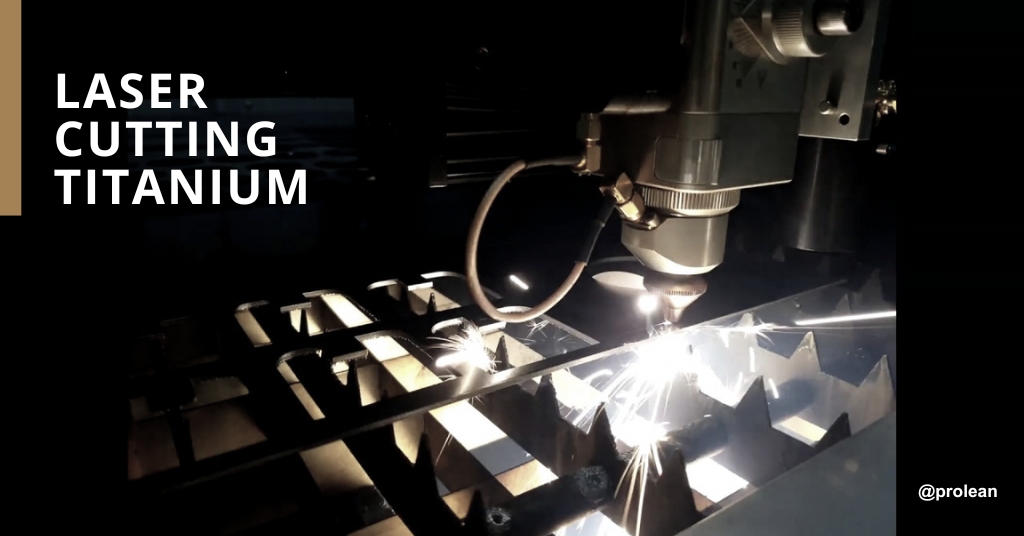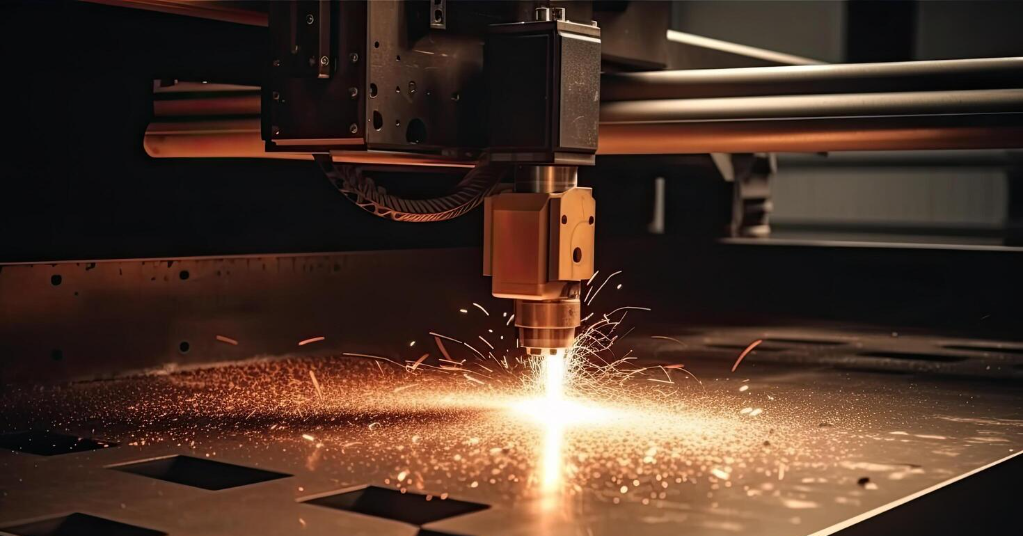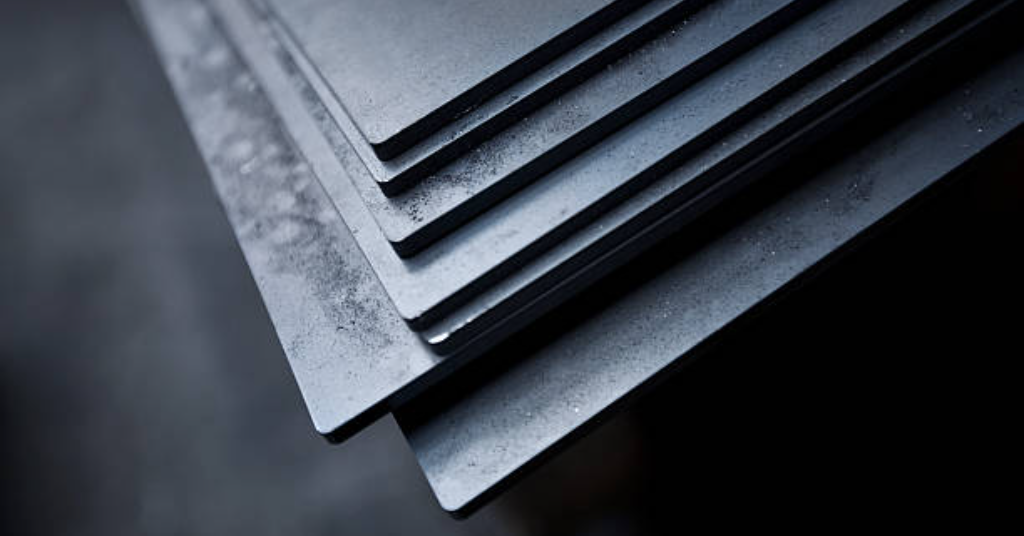“ CNC systems can be employed to provide laser cutting parts with accurate dimensions. It guarantees tight tolerance parts with minimal heat-affected zones and smooth finishes.”

Titanium metal has a remarkable strength-to-weight ratio and is resistant to corrosion. This makes it the most workable and popular metal for industrial engineers, architects, and product designers. Titanium is named after the Titans of Ancient Greek mythology, and, unsurprisingly, it is often associated with the legendary name. Although the hardness is a big advantage of titanium, it also brings challenges in cutting & shaping. However, Titanium laser cutting uses heat energy to overcome the hardness and create clean cuts.
Moreover, titanium can be machined with CNC and is compatible with almost all surface finishing processes, including bead blasting, powder coating, and electrophoresis.
Nevertheless, creating and producing titanium parts is unlike manufacturing aluminum or other low-cost materials. Since titanium blanks cost around ten times as much as Aluminum 6061, getting your parts right the first time is necessary. This blog post explains the fundamentals of Laser cutting titanium & CNC machining by covering the most appropriate applications and machining considerations.
How to Laser Cut Titanium?

Titanium laser cutting
Titanium is typically the best material for laser cutting, and it is perfectly machineable. Here’s a guide to the process and the aspects you should pay attention to while cutting titanium with a laser cutter.
The Process Steps:
The laser titanium cutting utilizes a high-powered laser beam to cut through titanium. The process is extremely accurate and utilizes an energy beam to produce small, precise designs and shapes. The entire process is carried out by CNC (computer numerical control) machines, which ensure the highest accuracy. Here’s a step-by-step look at how it’s done:
- Material Preparation: This process starts with cleaning the sheet or plate to remove the dirt, oil, and contaminants that could affect later titanium cutting.
- Laser Setup: The laser cutter has the right power settings, focusing lens, and cutting parameters based on the titanium thickness and alloy type being cut.
- Alignment: The titanium sheet is carefully laid on the cutting bed for optimal cuts at right angles.
- Titanium Cutting: The laser beam focuses on titanium and melts or evaporates the material along the cut path. Thus, a narrow and clean cut is created.
- Gas Assist: On cutting occasions, gases like nitrogen or argon are blown to create a shield of titanium and prevent oxidation, leading to better cuts.
- Quality Control: The above-mentioned step performs correctly under engineers’ observation and is assumed to be accurate, smooth, and free of defects.
Try Prolean Now!
Is Titanium Difficult to Laser Cut?
Cutting titanium with a laser is a reactive metal cutting process that can easily be affected by heat. To avoid warping, discoloration, and contamination, it should be cut at a relatively low temperature, up to 500-600 degrees Celsius.
Laser cutting has become a renowned way to achieve smooth edges and intricate cuts in titanium. Typically, a CO2 laser with either nitrogen or oxygen is used to achieve the best optimal finish. Prolean’s engineers are skilled in titanium’s heat sensitivity and know how to handle it appropriately. We precisely control and adjust the laser so that it doesn’t melt, burn, or blemish your titanium sheets, thus achieving the desired quality.
Why Use Laser For Cutting Titanium?
The CNC machining titanium provides numerous key advantages. Titanium is as strong as steel but much lighter, making it a perfect material for different heavy-duty applications. Titanium’s high melting point adds exceptional resistance to normal usage wear and tear, and its natural corrosion resistance guarantees long serviceability.
Moreover, titanium is a non-toxic, flexible material almost twice as elastic as steel but usually has less weight. That’s why it’s notably considered good for machine parts and other high-performance applications. After the correct cutting process has been established, it can be automated using CNC laser cutting machines, resulting in fast, accurate, and high-quality cuts to shape desired end-use parts. In addition, automation saves time and money. Though the titanium-cutting process is automated, our highly experienced professionals supervise each step to ensure high-quality, rigorous work standards, guaranteeing that your laser-cut titanium meets the most stringent quality standards.
Titanium Applications? Parts & Products

Titanium Sheets
The titanium metal is a multi-purpose metal with outstanding properties. Therefore its role is indispensable across many manufacturing sectors. On the property side, Its high strength-to-weight ratio makes it extremely strong and lightweight, which is especially critical in applications where weight reduction is notably crucial. Moreover, titanium is a rust-free material that can bear saltwater and various chemicals. These peculiar characteristics make it perfect for marine applications. Another noteworthy benefit of titanium is its biocompatibility, which means it can be used in medical implants without causing adverse reactions in the human body. Also, titanium’s heat resistance allows it to operate well in extreme temperatures, such as in aircraft engines.
Titanium is also widely used in the aerospace industry. It’s used in aircraft structures, components of engines, landing gear systems, and fasteners, and it is paramount that its strength, lightness, and corrosion resistance are needed for optimal functionalities. In the automotive industry, titanium is used for its durability, heat resistance, and lightweight features. Titanium vitally contributes to applications like exhaust systems, valves, springs, connecting rods, and suspension components. The medical field, in addition, uses titanium’s biocompatibility for orthopedic implants such as joint replacements, dental implants, surgical instruments, and prosthetics. In sum, titanium’s unique features make it an essential material for many high-performance and critical applications.
Advantages of Laser Cutting Titanium
Laser-cutting titanium offers multiple advantages for various precision applications, including;
- High Precision: The focused laser beam provides exceptional accuracy, and the material can be cut precisely. Even intricate designs and precise cuts on titanium are possible.
- Minimal Material Wastage: Laser cutting technology is ideal for processing different thicknesses of titanium, ensuring the correctness of cutting and reducing the amount of waste.
- Good Edge Quality: The laser cutting process features very small heat-affected zones and creates minimal heat transfer to the surrounding material, which ultimately minimizes the risk of warping or distortion. It results in the production of sharp and smooth edges on the titanium, which are not supposed to be polished any further.
- High Efficiency: Laser cutting is a rapid and accurate technology that enables a quick production process and shorter delivery time. It can cut through titanium rapidly, making it the best choice for large-scale production.
Try Prolean Now!
Can Plasma Cut Titanium?
Yes, plasma can cut titanium & its alloys. However, the process is exponentially more complicated than cutting other common metals. Titanium has a high melting point and is strong, which poses the biggest challenges during the plasma-cutting process.
Titanium can be oxidized by air at high temperatures during plasma cutting, and the resulting titanium dioxide is a hard and brittle compound that could affect the quality of the cut. Titanium’s high thermal conductivity and low mass density are also crucial factors that must account for the quick release of heat from the cut zone. This makes the kerf narrow and hard to control.
In addition to these problems, plasma cutting titanium can be used as a processing, but only if the appropriate plasma system and controlled process parameters are used. Therefore plasma cutting applications are so widespread where the size of the operation is large or in cases where precision is not a top priority since the method is fast and cost-effective for cutting titanium.
Factors To Consider the Right Laser Cutting Machine for Titanium
When choosing a laser cutter for titanium, several factors need to be taken into account to ensure the best results. Here are some key points to keep in mind:
- 1. Power Output: Titanium is hard and reflective, so you need a laser cutter with enough power. The higher the power, the faster and more efficient cutting.
- 2. Beam Quality: A good-quality laser beam is vital for accurate and neat cuts. High beam quality leads to good edge quality and few heat-affected zones.
- 3. Compatibility with Thicknesses and Grades: Make sure the laser cutter can deal with the particular thicknesses and grades of titanium you’ll be working with. Various titanium alloys might require different settings.
- 4. Gas Assist: Using gases like nitrogen and argon instead of oxygen for cutting will decrease oxidation and increase the quality of the cut. The gas assist must be installed, or the laser cutter must be adapted to it.
- 5. CAD/CAM Software rapport: It is important to ensure that the mentioned laser cutter is compatible with the CAD/CAM software and that they are compatible.
Why Is CNC Machining Optimal for Titanium Parts?
CNC machining is a usual way of manufacturing titanium parts because of its high accuracy and low cost. Casting is not used by manufacturers for titanium because titanium, when heated, reacts violently with oxygen, and many refractory materials used in casting have trace amounts of oxygen. An alternative is to manufacture rammed graphite casting with an oxygen-free graphite cast. Still, the surface texture is very rough, which is not suitable for most medical, aerospace, and industrial applications. Although lost wax casting is possible, it requires a vacuum chamber, making it more complicated and expensive.
Another alternative is 3D printing. Technologies such as Selective Laser Melting (SLM), Electron Beam Melting (EBM), and Direct Energy Deposition (DED) can process titanium. However, these 3D printing systems are still costly, and many industries have not yet certified 3D-printed titanium for safety-critical end-use parts. Unlike these techniques, CNC machining is distinctive in that it produces accurate and consistent results, which is the basis of high-quality parts. The technique is safe and controlled. Hence, the risks associated with other methods are minimized. CNC machines are versatile and can handle different titanium grades and part complexities. Moreover, they are cost-effective, especially for producing high-precision titanium parts. This is why CNC machining is the most precise, secure, versatile, and cost-effective method of manufacturing titanium parts, which is the best option for most applications.
Try Prolean Now!
Challenges of Laser Cutting Titanium
Although laser cutting titanium has many advantages, several issues must be considered before deciding on this method.
- High Initial Investment Requirements: The cost of buying a titanium-cutting laser cutter is high because it has specialized requirements. These machines are usually bought with a high price tag, especially for small businesses and industrial use.
- Reflectivity: A fraction of the laser energy can be reflected off the titanium material because of its high reflectivity index. This can result in a lower cutting efficiency and may require additional modifications of the laser parameters to obtain the required results.
- Oxidation: Titanium is a good reactor with oxygen and forms titanium oxide. The laser-cutting process can lead to oxidation on the cut edges, leading to discoloration and even surface quality problems. Gas assist or inert gas shielding can be used as a good method to prevent oxidation.
- Material Thickness: The melting point and thermal conductivity of thick titanium are so high that cutting it is a very challenging process. High laser power and low cutting speeds may be needed for clean and accurate cuts.
In general, laser cutting is a very prominent method of cutting titanium, but it also has some limitations, like reflectivity, oxidation, and material thickness. The right tools, techniques, and safety precautions can overcome these challenges of laser cutting titanium and result in high-quality cuts.
Top Laser Cutting Machine Models
In the metalworking market, you will find different laser-cutting machines with different features and capabilities. Currently, the market is dominated by two primary laser-cutting technologies: CO2 lasers and fiber lasers. Here are some popular laser cutting machine models:
CO2 Laser Cutting Machines
These machines make it possible to use a carbon dioxide laser to cut metals such as titanium. They are the best picks for cutting and engraving medium-to-thick materials and are known for their versatility and affordability.
Fiber Laser Cutting Machines
Fiber laser cutters hold higher power than CO2 machines. They can cut through titanium and non-metal-based materials with the help of fiber lasers. Fiber laser cutters are known for their fast cutting speed, high beam quality, and energy efficiency. They are mostly used for cutting thin to medium-thickness materials and can also serve as laser marking machines.
Nd: YAG Laser Cutting Equipment

Nd: YAG metal laser cutting
This equipment utilizes Nd: YAG laser (neodymium-doped yttrium aluminum garnet laser) for cutting materials. These solid-state lasers are very reliable for high-power applications and can even cut through the thickest plates, including titanium. Nd: YAG laser cutters are highly appreciated for their high power and ability to cut reflective materials.
The aforementioned laser cutting technologies have advantages that make them applicable to different purposes and material thicknesses. By understanding the capacities of different types, you can select the most appropriate laser cutting machine according to your particular requirements.
Can a Water Jet Cutter Precisely Cut Through Titanium?
Yes, you can say ’’Titanium Waterjet Cutting: A Cost-Effective Solution’’
Titanium waterjet cutting is a cost-effective alternative to other machining techniques. This method relies on a combination of a high-pressure water jet and an abrasive material to cut high-precision and complex parts while maintaining the metal’s original structure.
Waterjet metal cutting is a ‘cold process’ without any ‘heat-affected zone,’ Hence, titanium can be cut down without changing its molecular structure. Therefore, leads to the production of parts of higher quality, with sharp edges and a smooth surface, relatively free from burrs.
The waterjet metal cutting process offers many design options and can be very economical for bulk volume production. This makes it a suitable solution for many sectors, such as aerospace, architecture, shipbuilding, and the automotive industry. If your organization needs titanium parts in bulks with tight dimensions and minimal turnaround, waterjet titanium cutting can be an optimal process in that aspect.
Try Prolean Now!
Wrapping Up
CNC machining is a superior technique for cutting titanium, providing the needed precision, versatility, and cost-effectiveness. Titanium’s extraordinary features, including its high strength-to-weight ratio, corrosion resistance, and the fact that it can be finished in many different ways, have made it a very popular material for many industries. Though casting and additive manufacturing are good in their own way, CNC machining is superior in producing high-quality parts with little waste.
Although titanium is a hard and reactive material that presents difficulties, with CNC technology and careful parameter selection, we were able to achieve the best results. Manufacturers can use CNC machining to create titanium parts that are robust, dependable, and accurately machined for aerospace, medical, automotive, and other applications.
CNC machining is primarily a conglomerate of efficiency, accuracy, and reliability, and therefore titanium’s first choice. If your project needs top-quality parts with tight dimensions and sharp cuts, explore our titanium machining services to meet your exact parts manufacturing needs.




0 Comments